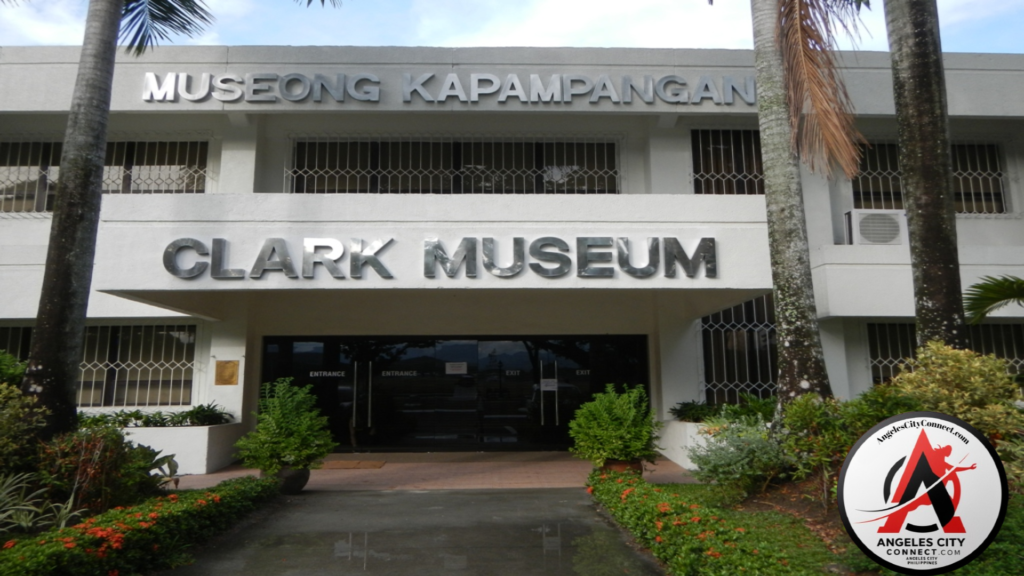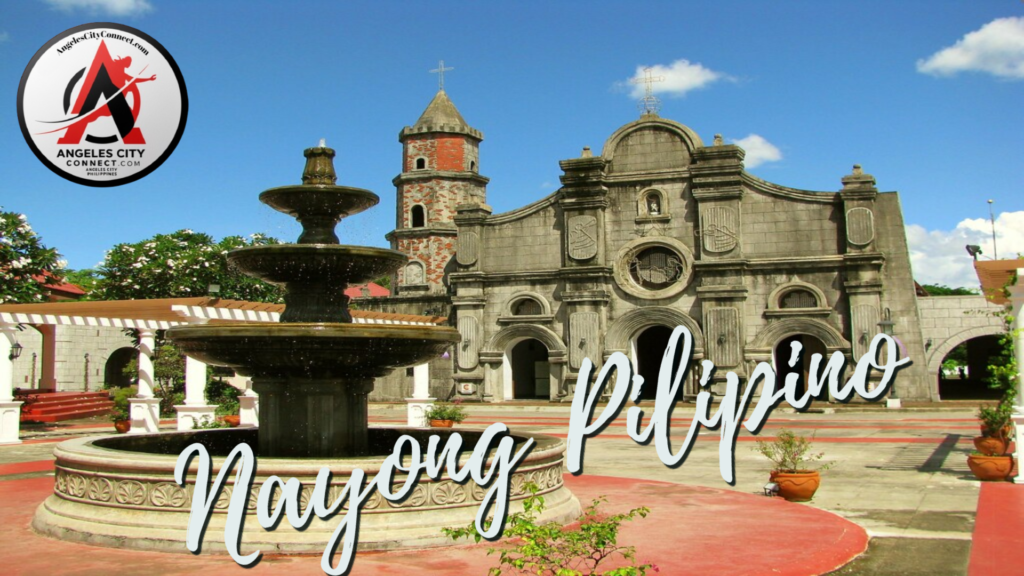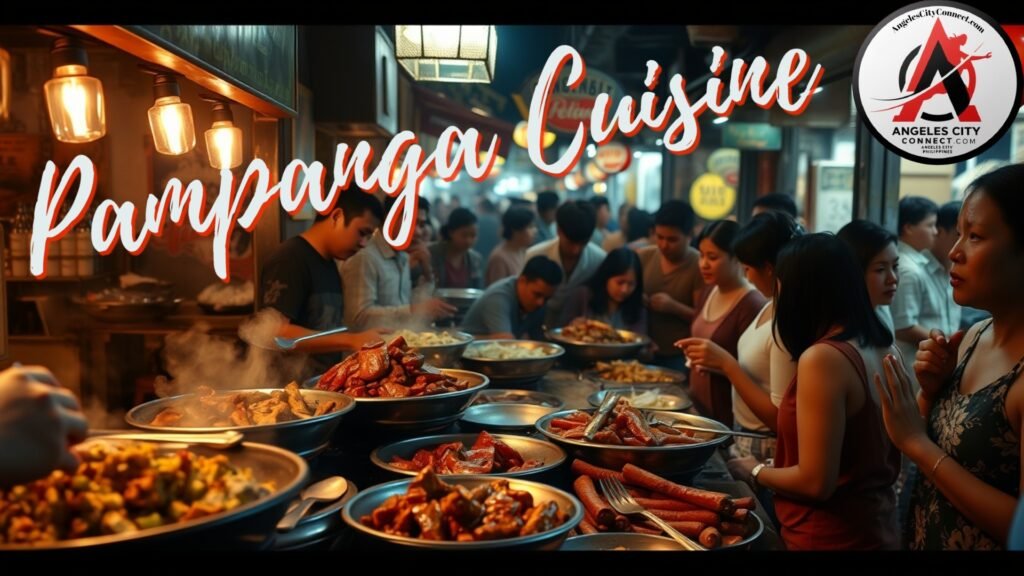The name Angeles is derived from the Spanish El Pueblo de los Angeles (“The Town of the Angels”) in honour of its patron saints, Los Santos Angeles Custodios (Holy Guardian Angels), and the name of its founder, Don Angel Pantaleón de Miranda.
Culture & Heritage
Angeles City in Pampanga boasts of a rich history and a fascinating culture. For culinary aficionados, it is the birthplace of sisig, a famous dish that usually has pork cheeks and chicken liver. For party goers, the place is also famous for its Tigtigan Terakan keng Dalan, an annual street party where local and famous bands play live music.
culture
Experience the warmth of Angeles City’s festivals, where locals proudly showcase their traditions through colorful parades, lively music, and tantalizing cuisine. Our sections on arts and crafts highlight the talents of local artisans, offering insights into traditional practices and contemporary innovations alike.
Immerse yourself in the culinary landscape of Angeles City, renowned for its diverse gastronomy. From street food delicacies to high-end dining experiences, our food guide will take you on a flavorful journey through the city’s mouthwatering offerings.
Join us as we celebrate the local community, its stories, and its commitment to preserving cultural heritage while embracing the future. Whether you’re a local resident, a visitor, or simply curious about our city, Culture Angeles City is your source for understanding the essence of this vibrant locale.
Explore, engage, and experience the rich culture of Angeles City with us!
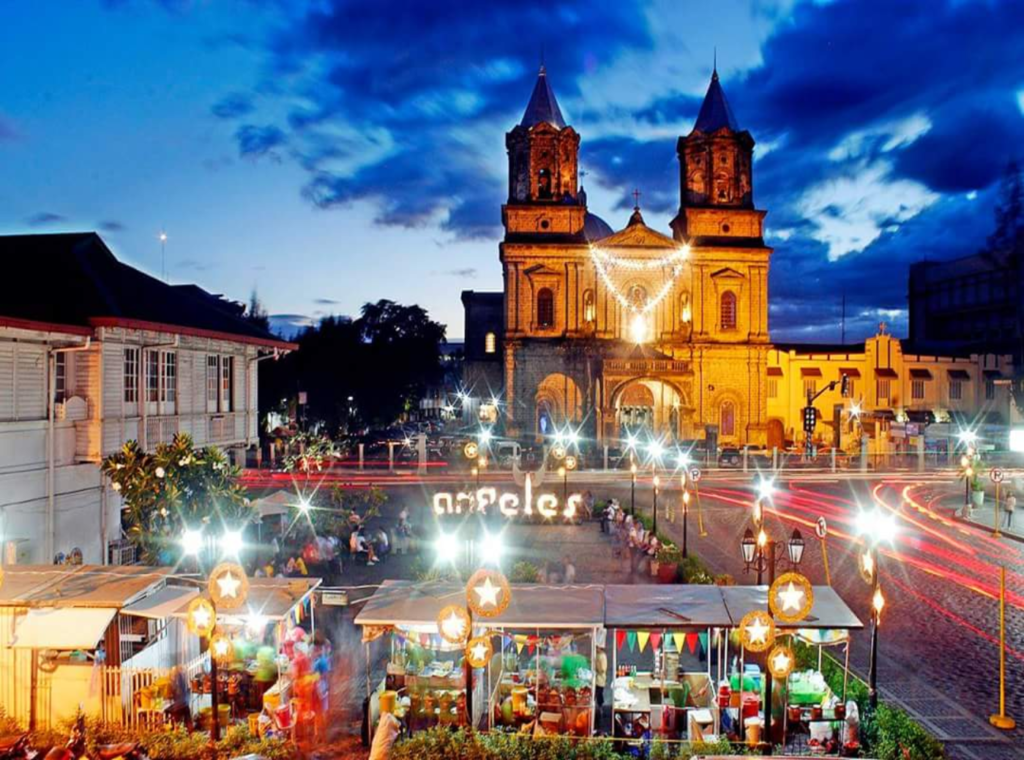
Welcome to Culture Angeles City: A Vibrant Tapestry of Heritage and Modernity
Explore the dynamic blend of tradition and innovation that defines Angeles City, a dazzling gem in the heart of the Philippines. Our website serves as your gateway to uncovering the rich cultural tapestry that makes Angeles City a unique destination.
Delve into the city’s storied past, from its origins as a bustling agricultural hub to its evolution into a lively urban center. Discover the influence of various cultures that have shaped its identity, including American, Spanish, and indigenous elements, all contributing to the city’s vibrant character.
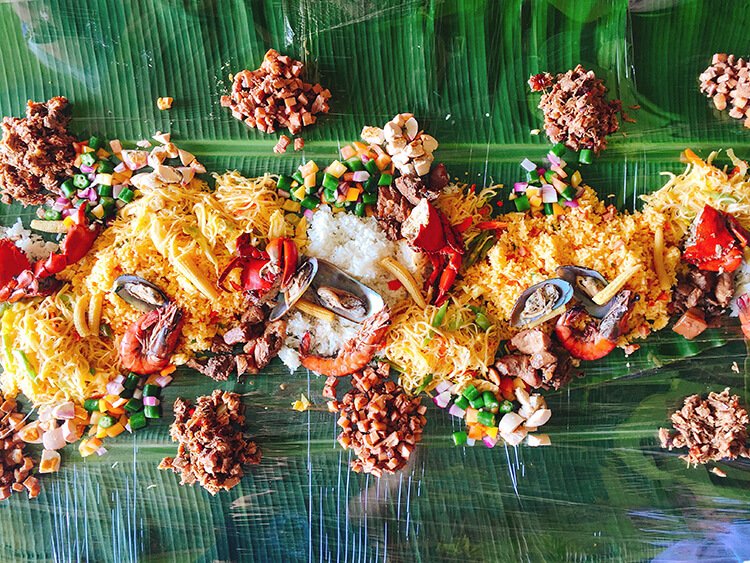
Etiquette
Filipinos are known to be extremely hospitable and sensitive. Confrontations are frequently avoided, and for some, even the word ‘no’ is used sparingly. A great amount of nonverbal communication, primarily with the head and arms is used often in the Philippines. “Yes” is signified by a jerk of the head upward. “No” is signified by a jerk of the head down. Since the Filipinos rarely say no, the non-verbal sign for “no” is sometimes accompanied by a verbal yes, which would still indicate “no.” This is only meant to soften the ‘no’ and should not be misunderstood as an affirmative response. Body language is sometimes more important than verbal language when communicating.
Some things to avoid are staring and standing with hands on the hips. Staring is considered rude and could be misinterpreted as a challenge and should best be avoided. Filipinos may stare at foreigners, especially in areas where foreigners are rarely seen. Standing with hands on the hips is considered a sign of anger or raising your voice. To indicate two of something, use your ring and pinkie fingers instead of your index and middle fingers. Also to beckon, extend your arm out, palm down, moving fingers in scratching motion. Touch someone’s elbow lightly to attract attention. Do not tap on the shoulder. Do not curl your index finger back and forth with your palm up. This is an insult.
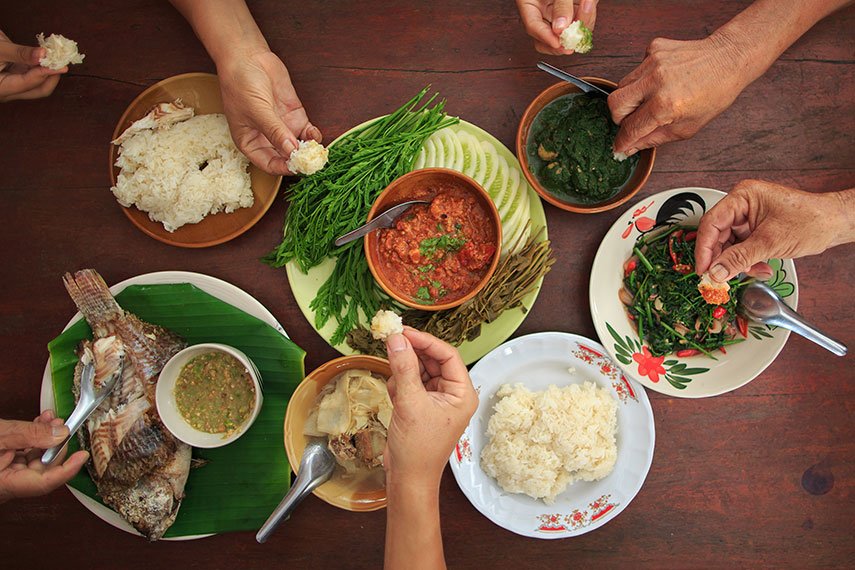
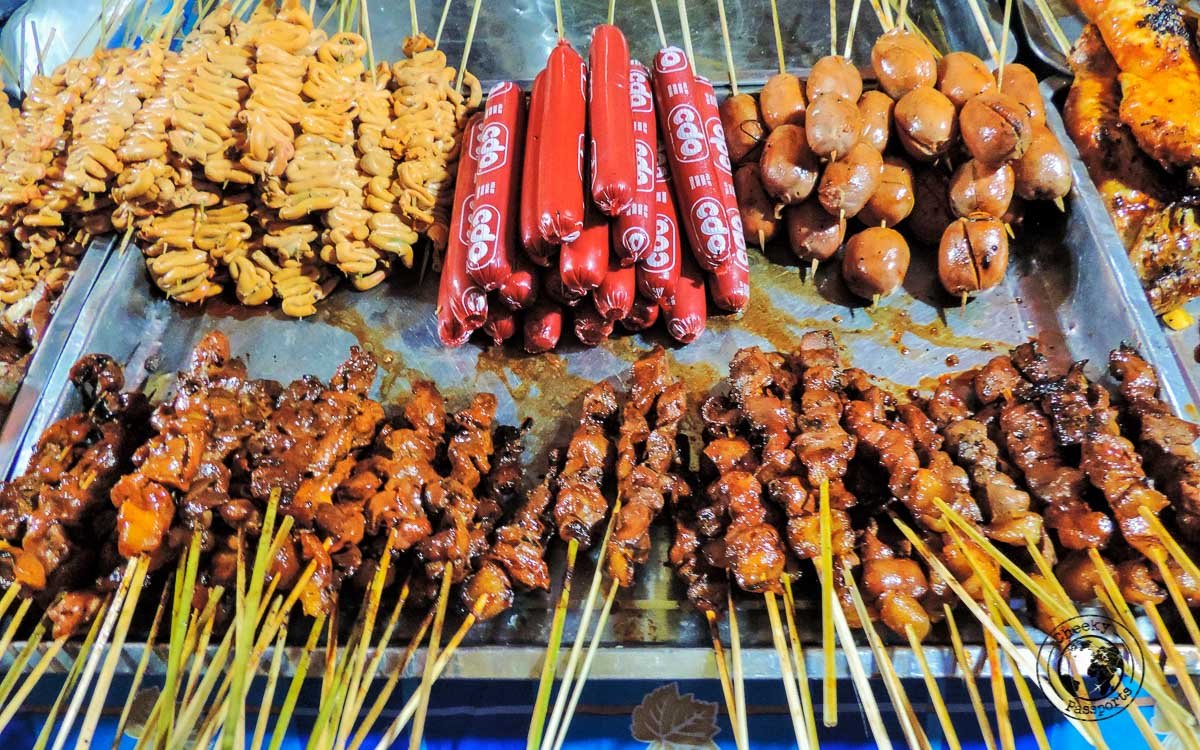
Meals are often served family-style or buffet-style where you serve yourself. One of the more unique local dining experiences is the ubiquitous turo turo (‘point-point’) found in every town. These restaurants only require that you point at your selection. No knowledge of food names is necessary; this is authentic local cuisine at its best. A fork and spoon are the typical eating utensils. Hold the fork in the left hand and use it to guide food to the spoon in your right hand. When dining in public places, it is polite to keep your hands above the table at all times. At the end of the meal, Filipinos typically leave a small amount of food on the plate as to not appear greedy. To show that you’ve finished eating, place both your fork and spoon parallel on the plate.
Angeles City Heritage
Clark Museum
Clark Museum tells the rich and vibrant history of the land and its people across four galleries. On the edge of the former American parade grounds, this well-presented museum details the history of Clark from 1901 up to its development of the Freeport Zone. It includes some great military memorabilia, photos and displays on Mt Pinatubo’s dramatic eruption. and info on the indigenous Aeta. From its humble beginnings as the pati (settlement) of Aetas, Clark grew into one of the largest American military installations outside of the U.S. mainland. The abrupt and disastrous 1991 eruption of Mt. Pinatubo threatened to end it all, were it not for the bravery, industry, and ingenuity of the Filipino spirit that transformed Clark into the beacon of economic progress and development it is today.
Museo ning Angeles
Angeles City in the province of Pampanga has a very rich culture and tradition. All of the symbols of the Kapampangan lifestyle are housed under one roof, Museo Ning Angeles or Angeles City Museum. The museum was built in 1999 in the former town hall that was originally built in 1922. The Kuliat Foundation Inc. manages the city museum, and their “absolute purpose is to preserve the history, culture, and tradition of Angeles City”.
It also serves as a venue for exhibits, art classes, concerts, and traditional celebrations. In 2012, the National Museum of the Philippines declared Museo Ning Angeles as an “Important Cultural Property of the Philippines”.
Santo Rosario Church
Holy Parish Church, formerly known as the “Santo Rosario Church,” is situated at the heart of Angeles City in Pampanga. The 141-year-old parish church is also known among locals as “Pisambang Maragul” or big city. It has been declared by the National Museum as one of the most important cultural properties in the country and has been recognized as a National Historic Site by the National Commission for Cultural and the Arts.
The church was constructed during the Spanish colonial era from 1877 to 1896 and its foundation was first established on October 18, 1877 by the founding families of Angeles City led by Don Mariano Henson. Filipinos mainly built the church via the “polo y servicio” labor system of the Spanish colonial government that forces workers to do labor for free. The first half of the church was finished by April 14, 1896 while the second half of the Catholic site including its distinctive dome was completed on September 17, 1891.
After its belfry was destroyed during World War II, the Philippine government subsequently restored the structure with the help of American troops and finished it in the early 1944s. Aside from celebrating mass here and admiring its architecture, visitors can also walk on the restored cobblestones roads that are a witness to the long-standing history of the church.
Pampanga Cuisine
Angeles City Cuisine: A Culinary Journey Through Pampanga’s Flavors**
Angeles City, located in the province of Pampanga, is widely regarded as the culinary capital of the Philippines. Known for its rich agricultural heritage and a vibrant food scene, the city serves as a melting pot of flavors that reflect both its historical influences and modern innovations.
The cuisine of Angeles City is celebrated for its robust flavors and unique dishes, many of which have roots in traditional Kapampangan cooking. Staples like **Sisig**, a sizzling dish made from finely chopped pork, are best enjoyed with a squeeze of fresh calamansi and a side of beer. **Kare-Kare**, a rich oxtail stew paired with savory peanut sauce, showcases the region’s love for hearty, comforting meals.
The city’s culinary landscape also features world-renowned delicacies such as **Pisang**, a popular street food made of fried bananas, and **Puto**, soft rice cakes often served with dinuguan (a savory pork blood stew). The local food scene boasts an array of restaurants, from quaint eateries to upscale dining establishments, where chefs blend tradition with creativity to present innovative culinary experiences.
Angeles City’s vibrant food festivals, like the **Aldo Ning Kapampangan**, highlight the region’s rich culinary heritage, showcasing local ingredients and traditional recipes passed down through generations.
Whether you’re a food enthusiast seeking authentic local flavors or a curious traveler eager to discover new tastes, Angeles City offers a gastronomic adventure that will awaken your palate and leave you with unforgettable memories. Join us in celebrating the flavors of Pampanga, where every meal is a story and every bite is a testament to the city’s culinary prowess.

